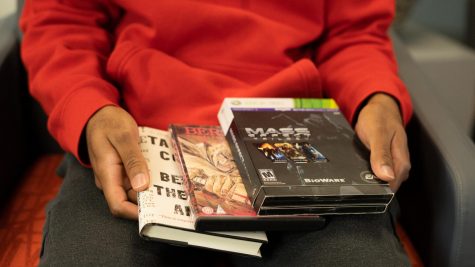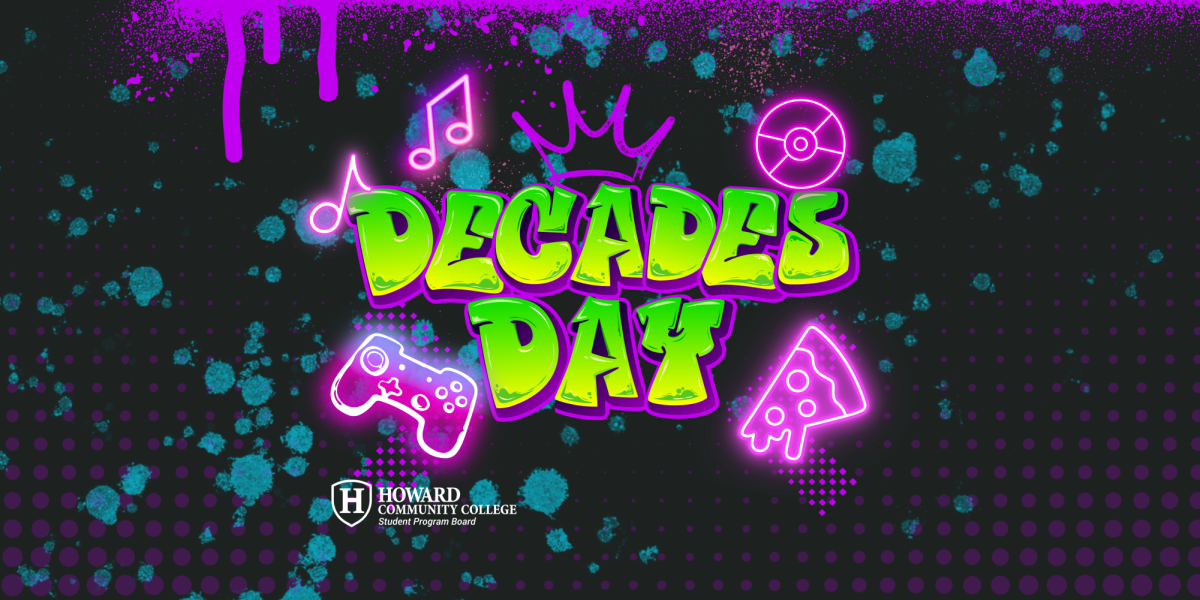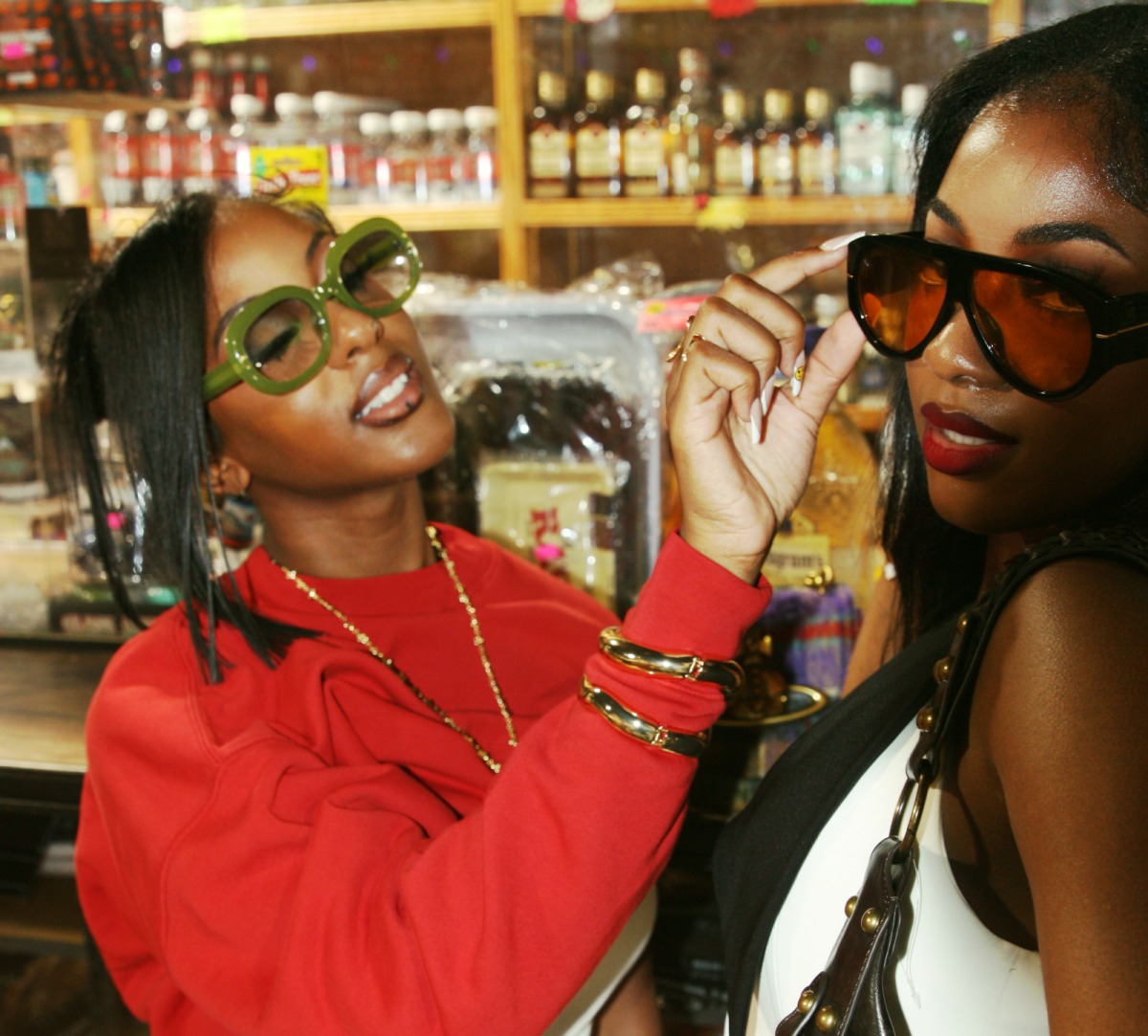HCC’s First Annual Pop-Up Art Series
The Body of Taurean Washington
November 4, 2019
HCC hosted its first annual Pop-Up Art Series featuring Taurean Washington at the beginning of this November. During the event, Washington showcased several art pieces from his various “artistic albums,” as he describes them. Before I begin discussing the artwork itself, I must make the disclaimer that I am neither a student nor an experienced critic of the arts, so in this article, I as if I am, however, I am myself a creative and lover of hip-hop; one who particularly looks forward to sharing my thoughts and feelings upon seeing the work, as well as the artist’s interpretations and influences.
Immediately upon seeing Washington’s work, it is easily discernible that he is an avid fan of hip-hop and music in general. Washington even goes as far as to describe his work as “Art-Hop,” a term coined by the artist himself. Across the board, there are sketches of iconic artists such as the reggae sensei of them all Bob Marley, the beautifully eccentric rocker Jimi Hendrix, the late Crenshaw rapper Nipsey Hussle, and, of course, the elder gods of east and west coast rap, Tupac and Biggie. The sketch of Nipsey Hussle, in particular, gives homage to his first and last studio album, Victory Lap, as well to the phrase which echoes from his eternal resting place in solid black letters “The Marathon Continues.”
There were also pieces solely dedicated to, who many would argue the kings of the rap game today, J Cole and Kendrick Lamar and their respective, musically acclaimed albums, KOD and To Pimp A Butterfly.
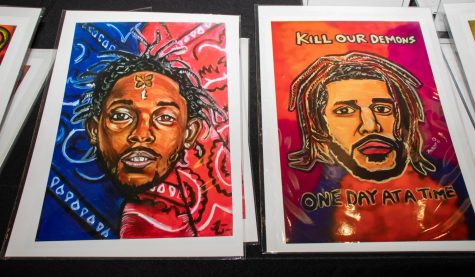
From his, To Pimp A Butterfly album was the evocative “Kendrick Lamar Freestyle,” where boldly defined red and blue paisley prints contrast each other in the background of Kendrick’s ebony face, who finds himself smack dab in the middle of it all. The opposing colors red and blue represent the divide between Bloods and Crips, but Kendrick, being caught between those two worlds, brings them together with his music. Also, there sits openly in the middle of Kendrick’s forehead a butterfly and underneath it is a defiant “i” which is also the name of a song on Kendrick’s TPAB. It says this is Kendrick Lamar, the disciple of Tupac, the connector of people, the “Mortal Man.”
Rather than relating descriptions or interpretations, I instead decided to dedicate a small ekphrastic poem to Washington’s “Black Butterfly,” it is called “Black Flight”:
Beautiful black butterfly
How you tease with the flutter of your wings
Vain it would be to relay the hope by which the sight brings
You are a wonder of a delicious dye
Beautiful black butterfly
Caress me in your Pan-African colors
Reminding me of the out-rooted mother
I shake not in the deep dark, ever it is nigh
Please, oh beautiful black butterfly
Show me the gilded way
So one day I should blossom unto you in the summer ray
The doleful caterpillar am I
The J Cole piece, “King of Dreamville,” focuses on
Cole’s more bohemian look around the time of KOD’s release. One of the subtle hallmarks of Washington’s work is the white and almost silvery outlines of the figures painted, from the viewer’s point of view, it draws out the most prominent features of the face. The color palette of the painting seems to be imbued in the flavor of KOD’s album cover, with the hazy hues of navy,
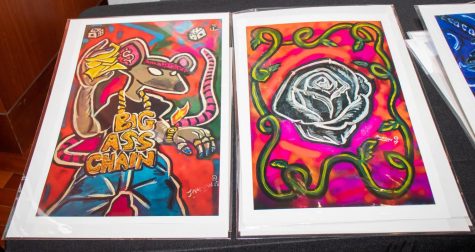
magenta, and a reddish-orange. Also added is the core message of Cole’s latest work, “Kill Our Demons,” whether it be drugs, money, sex, violence, or whatever that haunts or control us as human beings. Alongside this was one of Washington’s more lighthearted works, “Scorched Rollie” which brought to painting the ATM music video in the form of an anthropomorphic rat
holding a stack of cheese or, in other words, money. The stack is raised to its ears where a money sign is, signifying a common picture in hip hop imagery. Other objects that exemplify this theme are the “Big Ass Chain” and the fire coming off the rollie watch, the pink poker visor, the dices, and the jeweled rings.
The two art pieces that left the most indelible impression on me was “The Scream” and “The Toby Effect.” Drawn from Kendrick’s primordial, soul-ringing “loving you is complicated” in the song “u,” as well as “The Scream” by Edvard Munch, the former painting evokes a sense of hysteria and demands the viewer’s attention on the minstrel-like features of the painting: the bright oval red lips, the frantically wide eyes and nose, the blackened complexion almost wearing itself as a mask to an unrealized layer underneath. Pronouncing this feeling is a wavelength of bright colors enveloping themselves around the central figure as they descend into a high-frequency amalgamation of madness. Not to mention the wily hair and wrists linked together with chains spelling out “2018,” which I believe speaks to the current, disproportionate mass incarceration of black people and the almost perpetual state of bondage and servitude.
Dealing with a similar theme, “The Toby Effect” flashes resemblance of the harrowing photo of “Whipped Peter.” However, the painting serves as a direct inspiration of Lauryn Hill’s “Forgive Them Father” from her album “The Miseducation of Lauryn Hill.” In my discussion with Washington about the work, he tells me that the art world often time acts as a whip in shaping an artist’s style. Particularly the case if their vision does not align with the reigning Eurocentrism of the landscape. The visual scarring of the man in the painting parallels to the metaphorical ones of the artist himself, but, like the subject of the piece, he examples as a survivor, broken from his shackles and looking ever so forward to creating a distinguished path for himself.
I tribute this second poem, “Smile,” to Washington’s “Caught Up”:
I smile
In the damning rain
I smile
In face of hearts thrown down drains
I smile
When begotten to an eye worn shame
I smile
When every year is the same
I smile
Because that’s all I can do
I smile
Because otherwise, I’d turn all black n’ blue
I smile, I smile, I smile
Through the shittiness of it all
As is evidenced by his urban rendition of the Mona Lisa, Washington also gains inspiration from the DaVincis and the Picassos of the world, but he hopes to turn those standard images of art on its head and infiltrate it with his brand of modernist artistry. In the end, Washington wants to leave behind a legacy in his brush-stroked path. Through his artwork, he hopes to voice a wholly unique style, so that when people see one of his works, they’ll say, “Oh yeah, that’s a Taurean. No doubt about it.”
You can find Taurean Washington’s upcoming events, his contact and background information, and artwork viewable and purchasable on his website, https://www.taureanwashington.com/.


